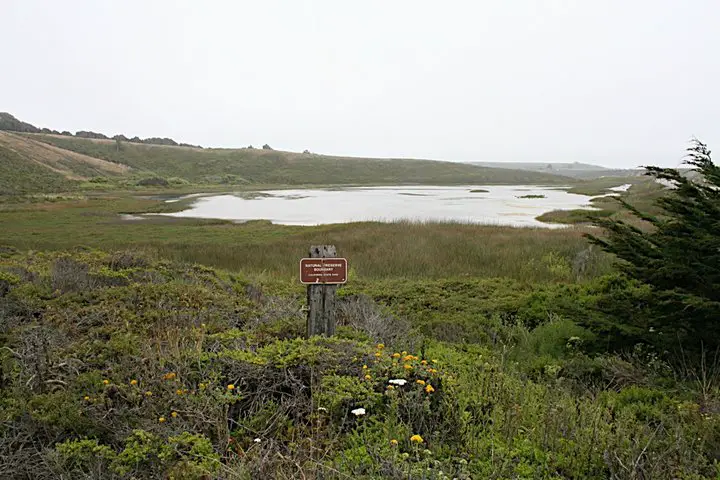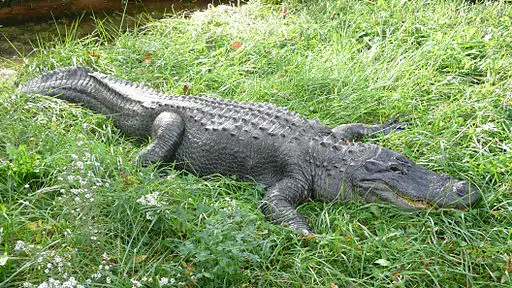Hiking in wetlands can be quite the challenge. Being from Ireland, I am of course quite familiar with this type of terrain as we get lots of rain. There are many places in Ireland and close by in the United Kingdom that have wetlands.

What is a Wetland?
Some common examples of wetland are:
- Bog
- Fen
- Marsh
- Swamp
Hiking in Wetlands
I have hiked in the types of terrain listed above many times. Usually it will be specific parts of hikes that will be particularly boggy or marshy although you can come across areas on the trail that are too deep to even attempt crossing. A full on swamp is a good example of this, not a place to be hiking in but you may well hike around the periphery and so you will encounter swampy and marshy bits.
Generally speaking, wetlands get harder to negotiate as the seasons get colder and wetter. The ground tends to get even more saturated in places in the autumn and winter and so it increases the effort you need to expend to cross it.
It’s funny as sometimes I think we don’t give marsh, bog, etc. it’s due respect as I do find it can be very arduous and tiring to hike in and it adds an extra level of difficulty to any hike. On a recent hike I had to cross some very marshy areas and it felt like I was nearly wading through quicksand! My legs were knee deep at times in places and the sheer effort it took to pull my legs back out while I hiked, if you can call it that, across the boggy and marshy ground was very tiring.
Usually accompanying the negotiation of this type of wetland terrain, in Ireland and the UK for sure, in the colder seasons is wet and inclement weather so I find that hiking in marsh and bog-land in cold wind and rain is a definite challenge.
I know a few hikers who I would consider pretty hardy but they have no time for hiking in this type of terrain. I think it is the type of terrain that can bring out the kind of love / hate reaction. Some people love hiking across bog and moorland while other’s just can’t stand it.
However, in saying all this, water will of course freeze if it’s cold enough so you can end up walking over quite icy surfaces, even in bogs and so on. This can work both ways and be to your advantage or disadvantage. I’ve been out on a crisp and icy morning hiking across bog in January and as it is frozen, it is actually quite easy to walk over and much more pleasant than having your boots sink deep into it as they normally would.
However, you need to be careful too of course. The ground is of course more slippy so there’s more risk of you taking a tumble on an icy patch. Something to be wary of for sure.
Keeping Your Feet Dry
Another tricky thing I find hiking in this type of environment is keeping your feet dry. Even with the right hiking boots, gaiters and hiking gear on, if your leg regularly get’s submerged in marsh or bog up to your knees, you have a real battle on your hands to try and keep your hiking socks and feet dry and, of course, warm.
You of course also have areas like the Everglades which are sticky swamps in a very humid climate and environment. I haven’t experienced hiking in that type of environment as yet but I can imagine it brings it’s own set of very specific challenges … alligators wanting to have you for dinner being one of the more significant ones 😉

To hike in this type of terrain and environment good waterproof hiking boots are a must. You will definitely need gaiters and also good waterproof rain pants. A waterproof hiking jacket is also a must as these areas are prone to heavy and regular rainfall.
A final note is on the clean-up afterwards. Cleaning up your hiking gear, in particular cleaning your hiking boots, after hiking in wetland type terrain does sometimes take a bit more work than many other environments as you’ve a tendency to take some of the bog etc. back home with you on your boots!
Also, it is a good idea to clean your boots and gear at the nearest available opportunity after hiking in bog and marshland. While this is a good general rule anyway, due to their special nature, some wetlands, like bogs, are more acidic and so can dissolve seals and binds on your hiking boots and gear if you not washed off with water.
Conclusion
Now, I don’t mean to knock bogs, marshland, etc., they have their own special type of beauty but they can be challenging to hike in. So, as always, be sure to prepare yourself appropriately before setting out on your hike if you’re venturing into wetlands and always wear the right hiking gear. Going into a wetland with the wrong gear on will at best be unpleasant and at worst potentially a disaster.
If you’re going into a wetland area for the first time be sure to do your research and find out what areas are safe to hike in.
Do you like to hike in wetlands? I’d love to hear you thoughts in the comments below 🙂
Wetlands in Ohio are mostly frozen in the winter
Thanks John … I imagine that must make it even harder to negotiate.